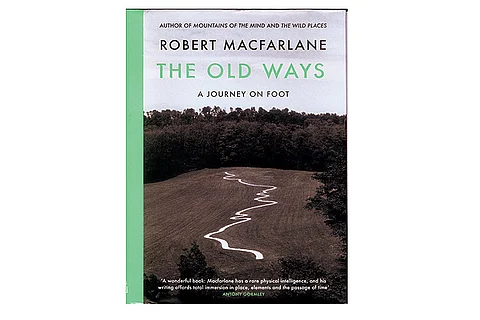
- Destinations
- Experiences
- Stay
- What's new
- Editor’s Picks
- Responsible Tourism
- CampaignsCampaigns
- Subscribe

Robert Macfarlane, in 13-year-long writing career, has become the most lyrical chronicler of the alternative world of the walk. This is not to be confused with trekking or hiking or other technical names we give to the act of walking. Instead, his prose meditations on traversing paths as a means of immersing oneself in nature and stories carry much greater significance.
The Old Ways (2012), his third book in a trilogy, maps the connections between wildness and the intellect, between the physicality of the methodical pacing of arms and legs and the allusive dance of the mind. If in his previous book, The Wild Places, Macfarlane arrived at the insight that the wild is an ongoing process, then this book is his attempt at positing mans place in the wild, through the prism of paths, used and forgotten.
It isnt by any means an original construct. Fro m the Zen masters in ancient Japan to modern greats like the American poet Gary Snyder and some of Macfarlanes own heroes like Edward Thomas and Nan Shepherd, this understanding has informed some of the best travel and nature writing. Macfarlanes fascinating addition to this narrative is the way he exerts himselfboth physically as well as intellectuallyto arrive at his own unique understanding of this relationship.
Although the book is subtitled A Journey on Foot, it isnt actually one continuous physical path. Macfarlane walks tracks as disparate as the ancient chalk roads of the Icknield Way in southern England, the pilgrim route of Santiago de Compostela in Spain, the Pleistocene peat and gneiss landscape of the Isle of Lewis in the Outer Hebrides, and the Buddhist pilgrim routes to Mount Minya Konka in China among others. The trap he avoids is that of seeming aloof, alone in his world of natural wonders. Macfarlane meets interesting, quirky characters everywhere he goes, strives to see the paths through their eyes, and, most importantly, is eager to learn about places that are alien to him.
Indeed, the most memorable passages of the book deals with a kind of path one doesnt associate with his writingthe paths of the sea. First he walks the no mans land of the Broomway in Essex, a ghost path between land and water that is revealed during low tide every day for a few hours. He describes this hallucinatory walk lyrically, Everywhere I looked were pivot points and fulcrums, symmetries and proliferationssand mimicked water, water mimicked sand, and the air duplicated the texture of boththe substance of landscape so influencing mind that minds own substance was altered. Later he undertakes two hauntingly described sea journeys in Scotland, as a complete novice who cant be of any real help to his seafaring companions.
In The Old Ways, Macfarlane has fashioned a deeply moving and honest addition to his young oeuvre. It left me wanting more, which is the best thing one can say of any writer.
(The Old Ways is the third book of a trilogy of nature books that consist of Mountains of the Mind from 2003and The Wild Places from 2007. His latest book isLandmarks.)
